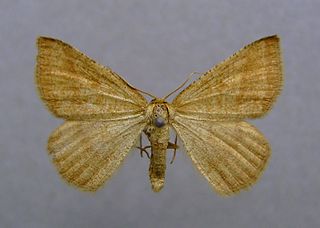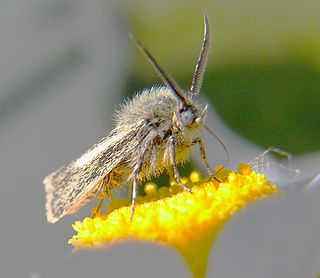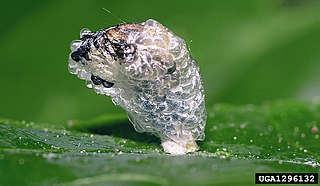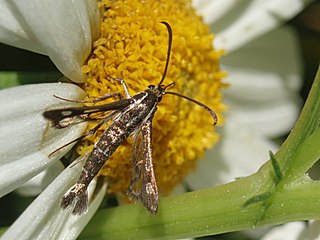 W
WAcleris kochiella is a moth of the family Tortricidae. It is found in most of Europe, Kazakhstan, the Ural region, Irkutsk and China.
 W
WAplasta is a monotypic moth genus in the family Geometridae erected by Jacob Hübner in 1823. Its only species, Aplasta ononaria, the rest harrow, was first described by Johann Kaspar Füssli in 1783. It is found in southern Europe to Anatolia and from England to the Baltic states.
 W
WBrachodes appendiculata is a moth of the family Brachodidae. It is found in Austria, the Czech Republic, Slovakia, Slovenia, former Yugoslavia, Hungary, Italy, Romania, Ukraine, Russia and the Near East.
 W
WBucculatrix frangutella is a moth of the family Bucculatricidae. It was described by Johann August Ephraim Goeze in 1783. It is found in Europe.
 W
WCerura erminea is a moth of the family Notodontidae, also known as the lesser puss moth or feline. It is found in Europe.
 W
WChamaesphecia empiformis is a moth of the family Sesiidae. It is found in Europe. It strongly resembles Chamaesphecia tenthrediniformis, some sources classify both as one species.
 W
WColeophora kuehnella is a moth of the family Coleophoridae. It was first described by Johann Goeze in 1783 and is found in Asia and Europe.
Coleophora violacea is a moth of the family Coleophoridae. It is found from Fennoscandia to the Pyrenees, Italy and Hungary and from Great Britain to Russia.
 W
WThe parsnip moth or parsnip webworm is a moth of the family Depressariidae. It is found in most of Europe, except Portugal and most of the Balkan Peninsula.
 W
WEpermenia chaerophyllella, also known as the garden lance-wing, is a moth of the family Epermeniidae fist described by Johann August Ephraim Goeze in 1783. It is found in all of Europe and Asia Minor.
 W
WEthmia quadrillella is a moth belonging to the family Depressariidae, subfamily Ethmiinae.
 W
WHellinsia didactylites is a moth of the family Pterophoridae. It is found in most of Europe, east into Russia.
 W
WLuffia lapidella is a moth of the Psychidae family. It is found in Europe including The Netherlands and Belgium.
Phyllonorycter esperella is a moth of the family Gracillariidae. It is found from Sweden to the Pyrenees, Italy and Greece and from Great Britain to Ukraine.
 W
WPyropteron muscaeforme, the thrift clearwing, is a moth of the family Sesiidae. It is known from most of Europe. A small member of its genus, the wingspan is 15–18 mm. It is further distinguished by narrow clear (transparent) spaces on the blackish, or bronzy, forewings. There are three whitish bands on the body, and traces of a whitish line along the middle of the back.
 W
WThe rose leaf miner is a moth of the family Nepticulidae. It is found in all of Europe, east to the eastern part of the Palearctic realm.
 W
WSynanthedon formicaeformis, the red-tipped clearwing, is a moth of the family Sesiidae and can be found in all of Europe, the eastern Palearctic realm, and the Near East. The larvae sometimes form pear-shaped galls on willows. It was first described by Eugenius Johann Christoph Esper in 1783.
 W
WZygaena lavandulae is a species of moth in the family Zygaenidae.
 W
WZygaena trifolii, the five-spot burnet, is a moth in the family Zygaenidae. It is found from North Africa, through the western Mediterranean, Great Britain and central Europe to Ukraine. It is not found in Scandinavia.